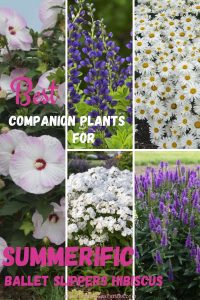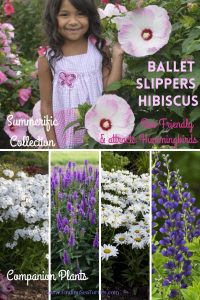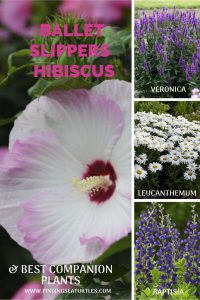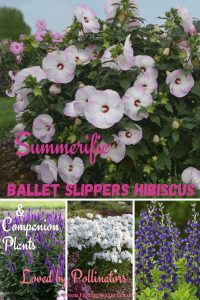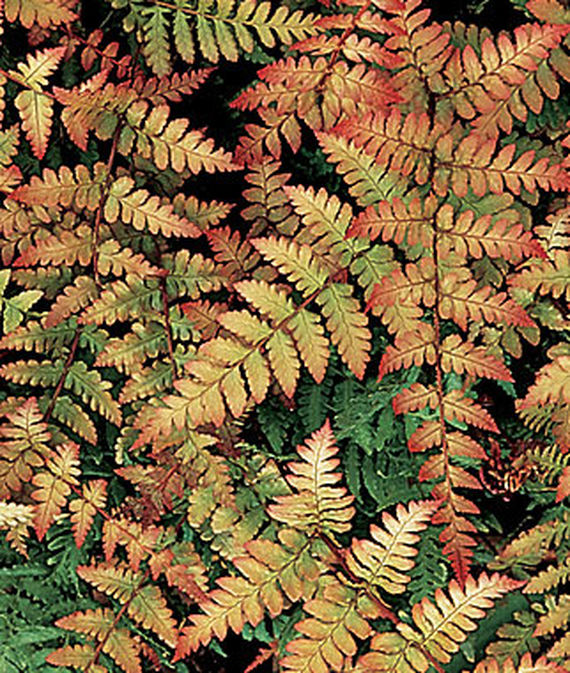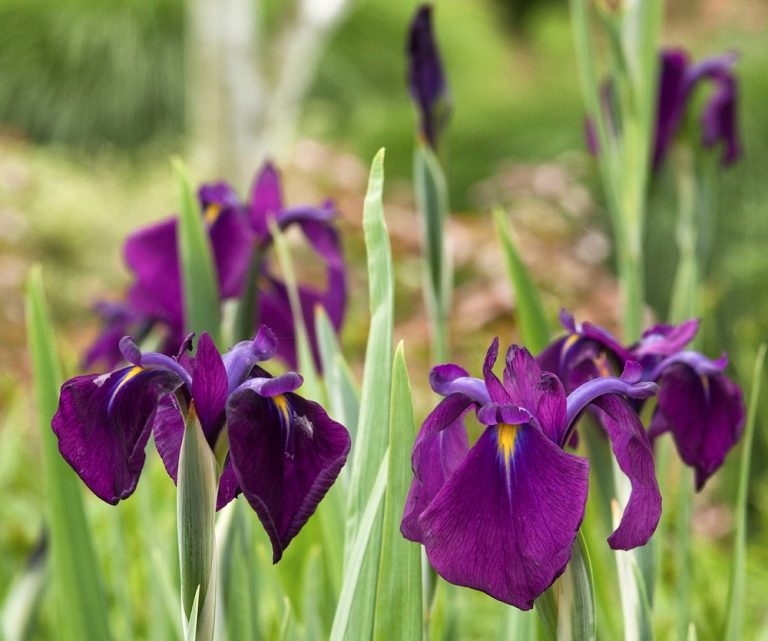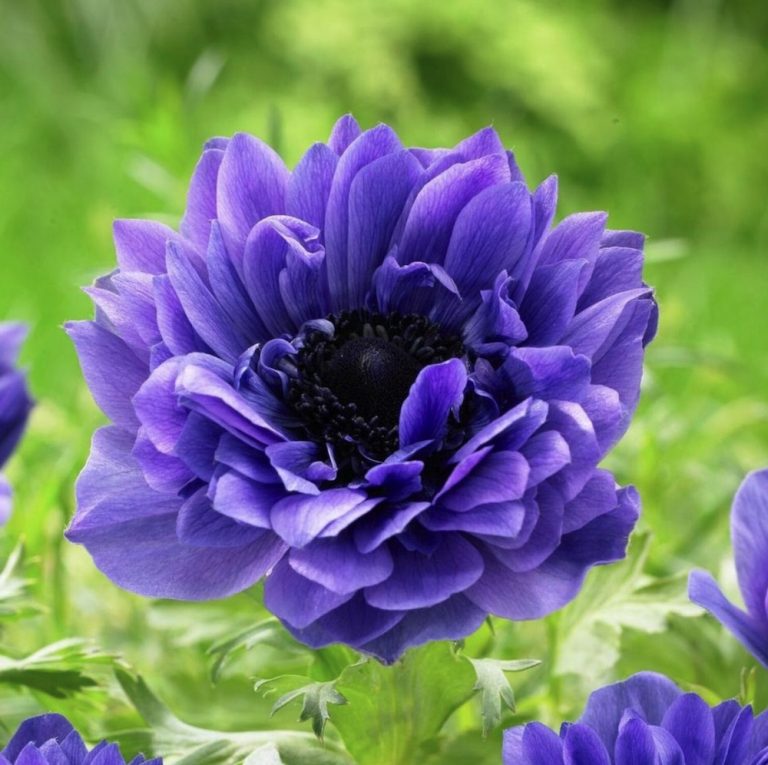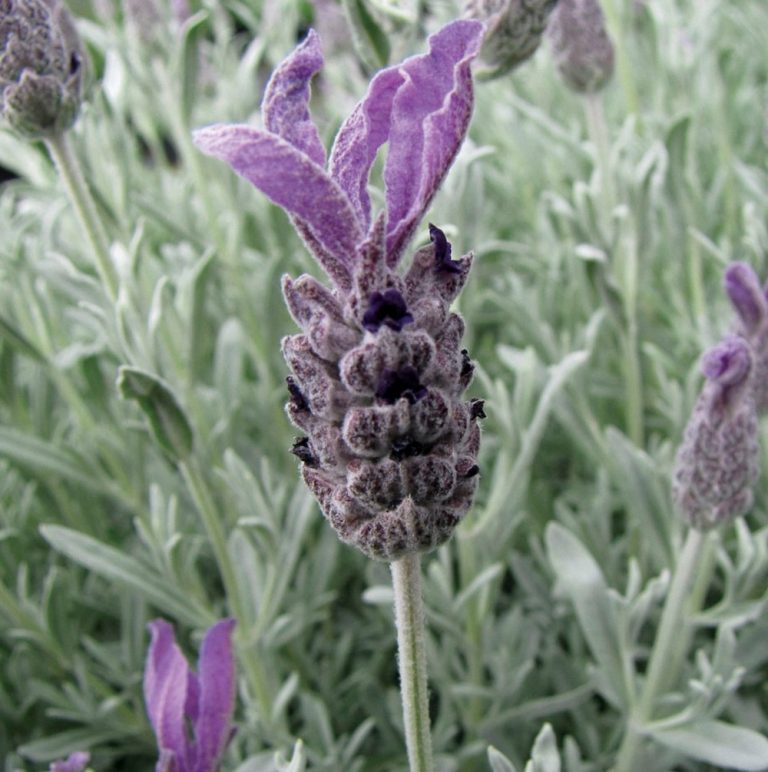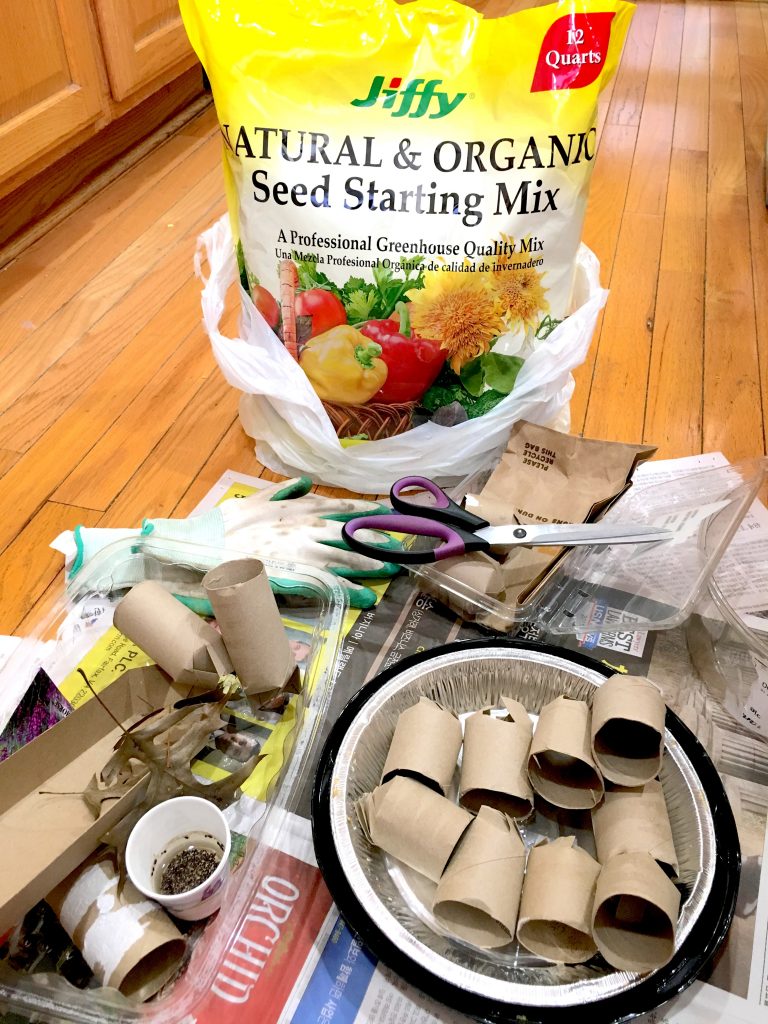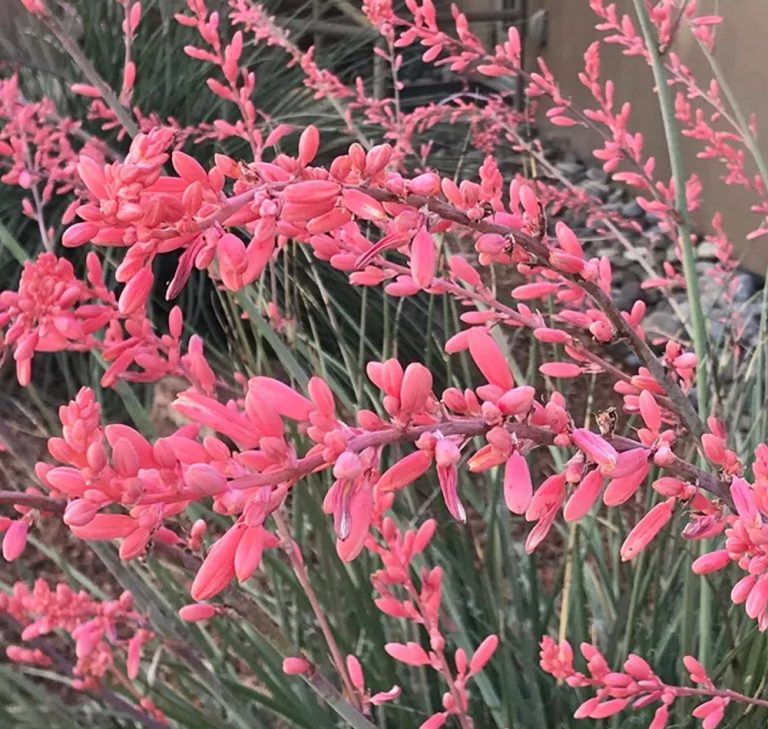Best Companion Plants for BalletSlippers Hibiscus
Today we are going to share the best companion plants for BalletSlippers Hibiscus, a Summerific Hibiscus. Are you a fan of the Summerific perennial Hibiscus? Once you see the plate size blooms you’ll see why the Summerific Hibiscus are so popular. Perfect for some mid to late Summer garden color with blooms that last into early Fall. And a favorite of bees as well as hummingbirds.
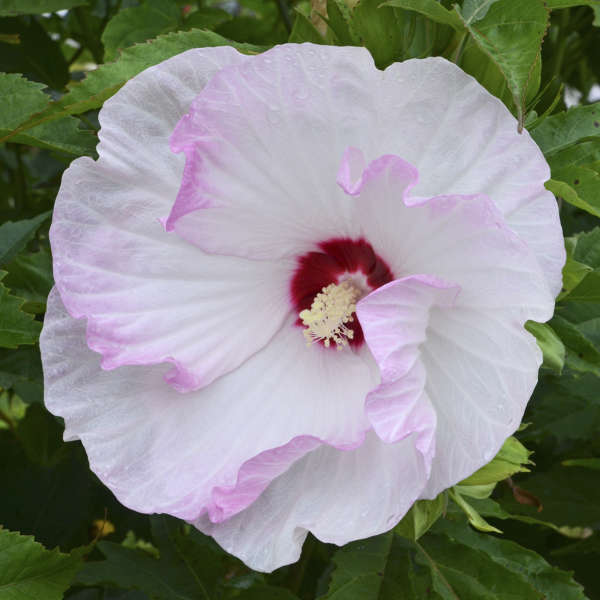
The hardy perennial hibiscus plant is also known as a Rose Mallow. Ballet Slippers Hibiscus is part of the Summerific Collection from the talented team at Walters Gardens. These beauties are hardy hibiscus that grow in zones 4 to 9. Native to the central and eastern regions of the US. An indeterminate blooming plant that features blooms from the length of the stem top to the bottom. This Hibiscus collection has top to bottom flower coverage as seen in the image below.
Best Growing Conditions for BalletSlippers Hibiscus
Hibiscus typically grow along wet landscapes such as riverbanks and near inland lakes. So these hibiscus tend to do well with consistent watering and more so right after being planted. Ideal for garden areas with wetter conditions.

Ballet Slippers grow 4 feet high and between 5 to 6 feet wide, so allow plenty of room for future growth. And does best in a Sun filled garden spot. You won’t be disappointed with the near white 7 inch ruffled blooms. Blooms with deep red eyes and blush pink petal edges that create a pinwheel effect. Irresistible blooms that attract both bees and hummingbirds although they tend to be resistant to deer. A native North American plant that blooms from mid to late Summer and continues into the early Fall.
Best Companion Plants for BalletSlippers Hibiscus
Companion plants can not only accentuate a plant but they add interest and texture to the garden. The best companion plants for Ballet Slippers Hibiscus are the following beauties:
Sparkling Sapphires Baptisia – Companion Plants for BalletSlippers Hibiscus
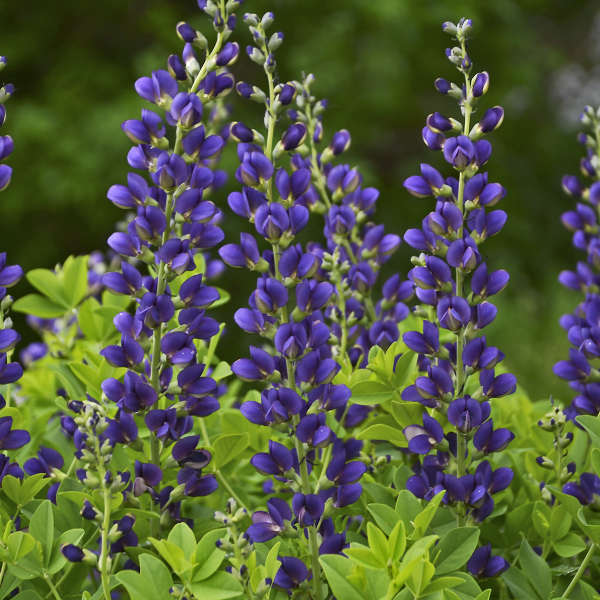
The first of the companion plants for Ballet Slippers Hibiscus is a baptisia. Sparkling Sapphires Baptisia is commonly known as False Indigo.
- Grows in zones 4 to 9
- Part shade and part Sun to full Sun
- Reaches 2 1/2 to 3 feet high and wide
- Flowers are blue purple shades with green foliage
- Blooms begin in late Spring and continue through early Summer
- Bee friendly baptisia and attracts butterflies
- Resistant to deer
- Blooms develop dried seed heads once the bloom period has ended
- Plant Sparkling Sapphires in a cottage, prairie, or rain garden style
- Use in a garden border, and floral arrangements
- Tolerant of salt and drought conditions once established
- Makes an excellent specimen or focal point in your garden
- Native to North America
Whoops-a-Daisy Leucanthemum

The second companion plant is a Leucanthemum. Whoops-a-Daisy is commonly known as Shasta Daisy.
- Grows in zones 5 to 9
- Full Sun
- Reaches 15 inches tall with a spread of 22 inches wide
- White shades of flowers with green foliage
- Blooms early to mid Summer
- A bee friendly leucanthemum that attracts butterflies
- Plant Whoops-a-daisy with the Ballet Slippers Hibiscus
- Use in a garden border, and floral arrangements
Opening Act White Phlox – Companion Plants for BalletSlipper Hibiscus
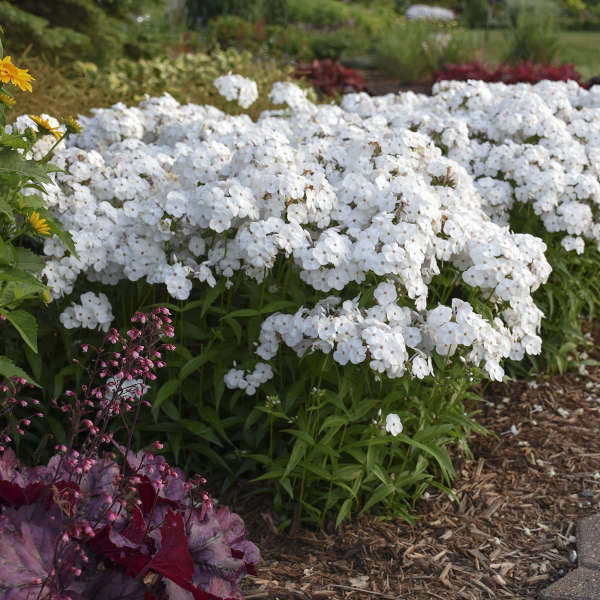
The third companion plant is phlox. Opening Act White Phlox is commonly known as a Hybrid Phlox.
- Grows in zones 4 to 8
- Full Sun
- Reaches 18 to 20 inches tall and wide
- Fragrant white shades of blooms from early to late Summer
- A bee friendly phlox that attracts both butterflies and hummingbirds
- Plant Opening Act White Phlox with Ballet Slippers Hibiscus in a cottage, prairie, or rain garden
- Ideal for use as a garden border or in a floral arrangement
- Native to North America
Very Van Gogh Veronica

The fourth companion plant is a veronica. Very Van Gogh Veronica commonly known as Spike Speedwell.
- Grows in zones 4 to 8
- Part shade and part Sun to full Sun
- Reaches 18 to 20 inches tall with a spread of 20 to 24 inches
- Shades of pink and purples
- Blooms mid to late Summer
- Bee friendly Veronica that attracts both butterflies and hummingbirds
- Resistant to Deer
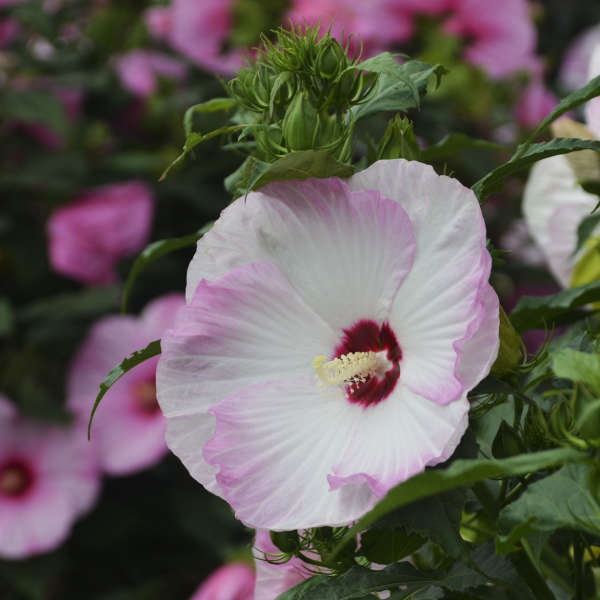
For added garden interest to the Ballet Slippers Hibiscus plant any of these four companion perennials. So, do you have any Summerific Hibiscus in your garden? They are incredibly striking flowers that are a favorite of pollinators. Find these plants and more at your local nursery or garden center.
If you enjoyed this post you may . . .
Enjoy some of our other gardening related posts.
How to Provide a Reliable Water Source for Birds
Native Plants that Attract Birds
Plants that Attract Monarch Butterflies
And if you have any gardening questions, feel free to reach out to us. We always are ready to help you out. And be sure to include your zone and sunlight requirements with any of your gardening questions.
Thank you for dropping by.
Mary


